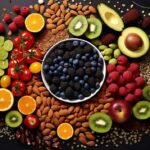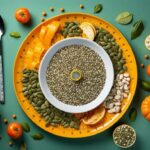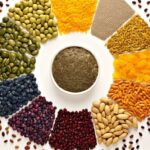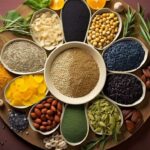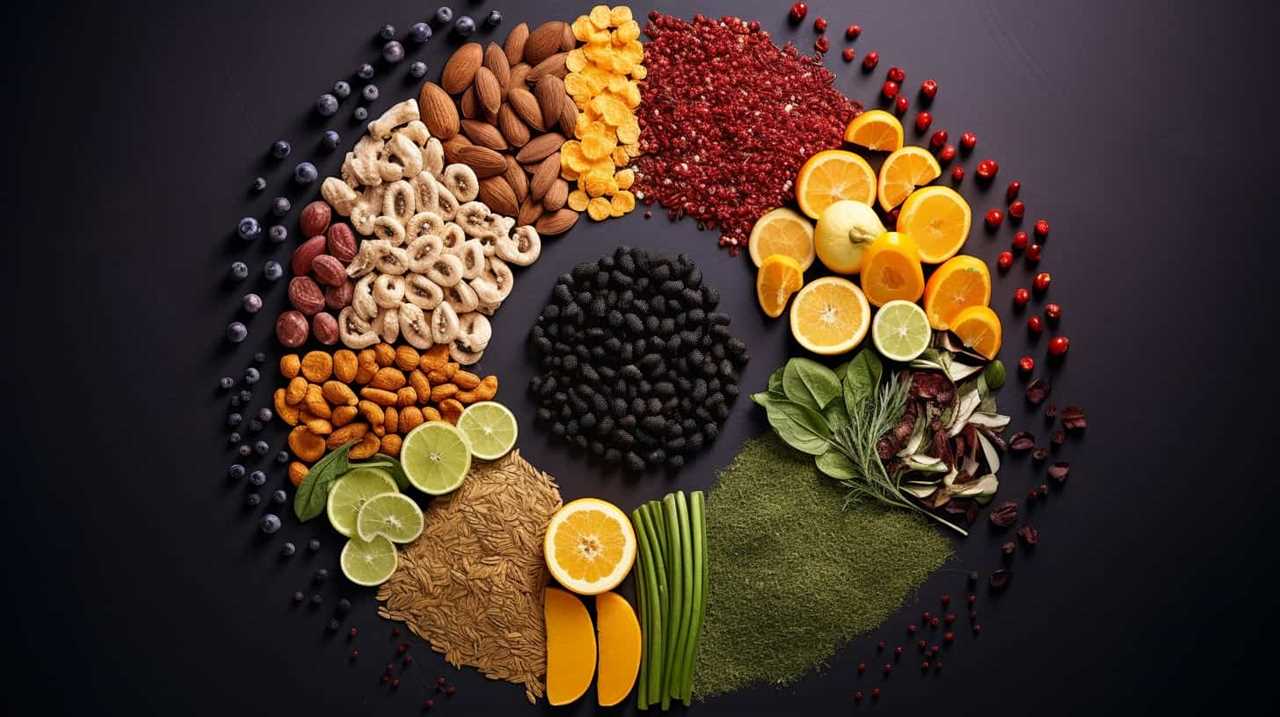Exploring the captivating realm of traditional diets opens our eyes to the crucial part that seeds held in supporting the well-being and vigor of our forebears.
From chia seeds to flax seeds, these tiny powerhouses were not only a staple in their diets but also held immense culinary and medicinal significance.
Join us on this journey as we uncover the remarkable ways in which seeds shaped the ancient world’s approach to nourishment and well-being.
Key Takeaways
- Chia seeds were highly valued in ancient civilizations, symbolizing wealth and power.
- Chia seeds were cultivated and relied upon as a staple food, providing essential nutrients and sustainable energy.
- Chia seeds were used in various culinary and medicinal applications, aiding in digestion and promoting healthy skin and hair.
- Chia seeds, along with other seeds like flax seeds and hemp seeds, played a significant role in promoting health and longevity in ancient societies.
Significance of Chia Seeds in Ancient Times
Chia seeds held significant importance in ancient times for their nutritional value and versatile uses. In many ancient civilizations, chia seeds were considered a symbol of wealth and power. These tiny seeds were highly valued and often used as a form of currency, demonstrating the high regard in which they were held.
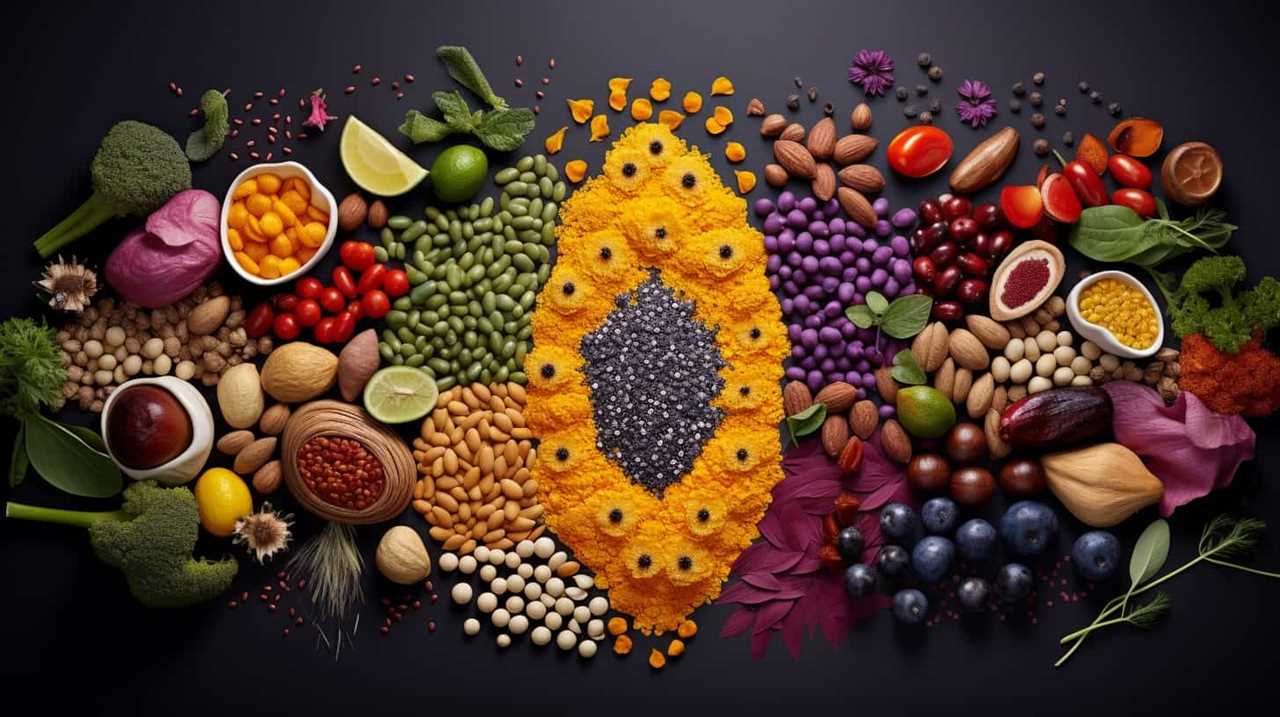
Additionally, chia seeds played a significant role in ritual and religious practices of ancient cultures. They were often used in ceremonies and offerings to the gods, symbolizing abundance and fertility. The belief in the spiritual and sacred nature of chia seeds led to their inclusion in various religious rituals and practices.
The versatility and symbolic significance of chia seeds made them a staple in the lives of ancient civilizations, serving both practical and ceremonial purposes.
Chia Seeds as a Staple Food in Ancient Cultures
Did ancient cultures rely on chia seeds as a staple food for their nutrition and sustenance?
The historical cultivation of chia seeds reveals that they were indeed a significant part of ancient diets. Cultivated by civilizations such as the Aztecs and Mayans, chia seeds were revered for their nutritional value and versatility. Rich in omega-3 fatty acids, fiber, and protein, chia seeds provided a sustainable source of energy and essential nutrients.
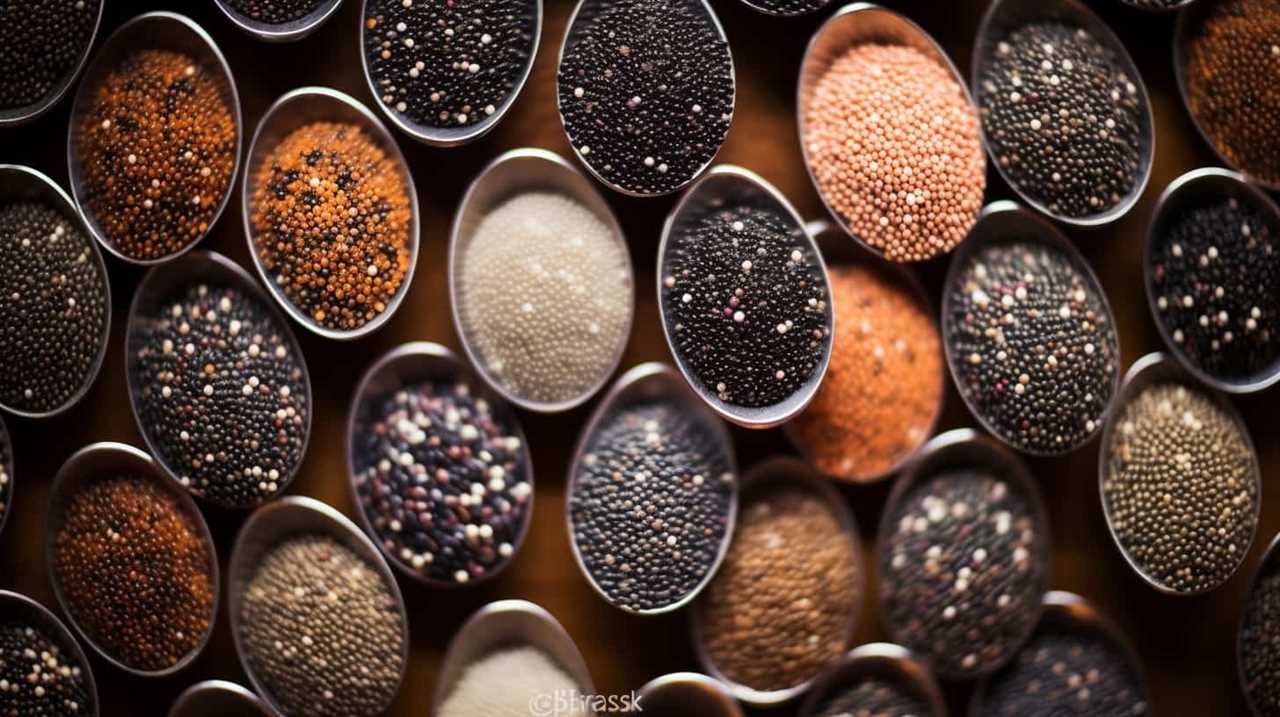
Moreover, chia seeds held symbolic meaning in ancient cultures, representing abundance and fertility. The belief in the fertility-enhancing properties of chia seeds led to their inclusion in rituals and ceremonies.
As a staple food, chia seeds played a vital role in the ancient diet, offering sustenance and promoting overall well-being. Their historical significance as a nutritious and culturally significant food can’t be overstated.
Nutritional Benefits of Chia Seeds in Ancient Diets
Exploring the nutritional benefits of incorporating chia seeds into our ancient diets reveals their significant role in promoting overall well-being. Chia seeds were not only a staple food in ancient cultures but also a valuable source of essential nutrients. These tiny seeds were packed with nutritional properties that provided numerous health benefits.
Let’s take a closer look at the nutritional composition of chia seeds:
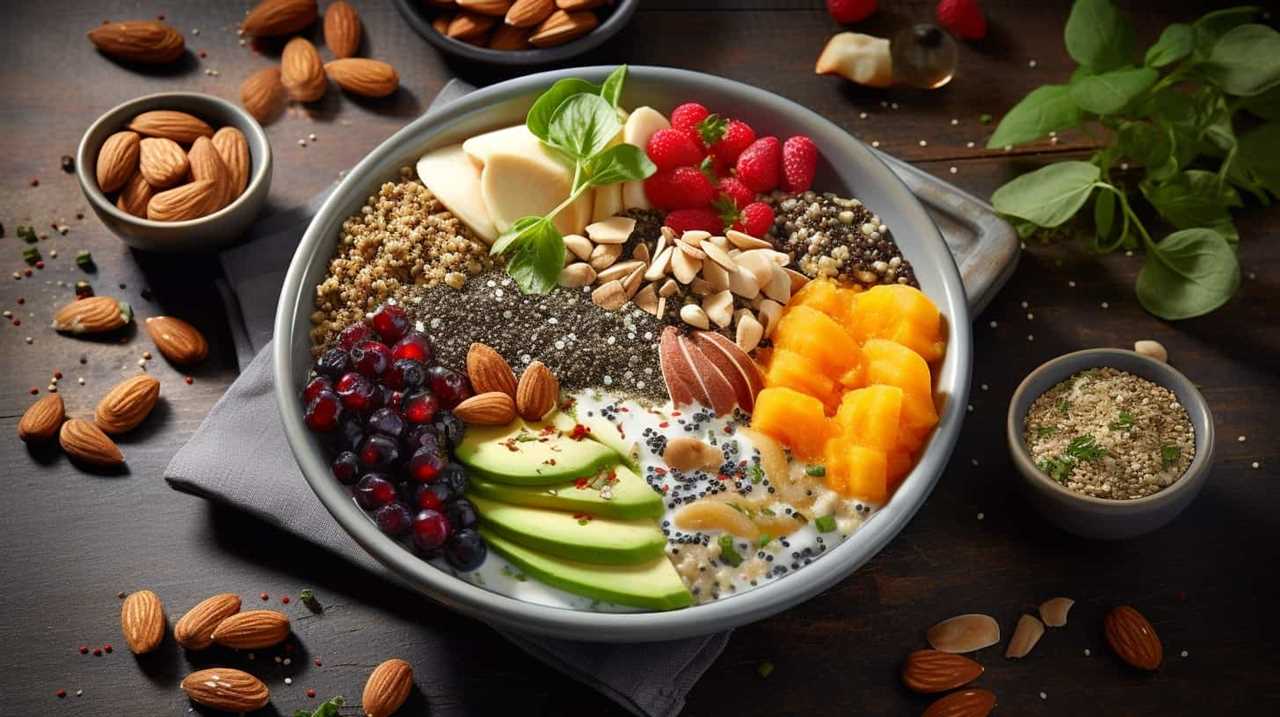
| Nutrient | Amount per 100g |
|---|---|
| Protein | 16.5g |
| Fiber | 34.4g |
| Omega-3 Fatty Acids | 18.5g |
Chia seeds were a rich source of protein, which is crucial for building and repairing tissues. Their high fiber content aided in digestion and helped maintain a healthy weight. Additionally, chia seeds were an excellent source of omega-3 fatty acids, which are essential for brain health and reducing inflammation.
Beyond their nutritional properties, chia seeds held cultural significance in ancient diets. They were often considered a symbol of strength and endurance, and were used in various traditional ceremonies. The inclusion of chia seeds in ancient diets highlights their importance in promoting a balanced and nourishing lifestyle.
Culinary and Medicinal Uses of Chia Seeds in Ancient Nutrition
We found that incorporating chia seeds into our ancient diets had a multitude of culinary and medicinal uses. These tiny seeds weren’t only nutritious but also versatile in our culinary innovations and cultural practices.
Here are five ways we utilized chia seeds in our ancient nutrition:
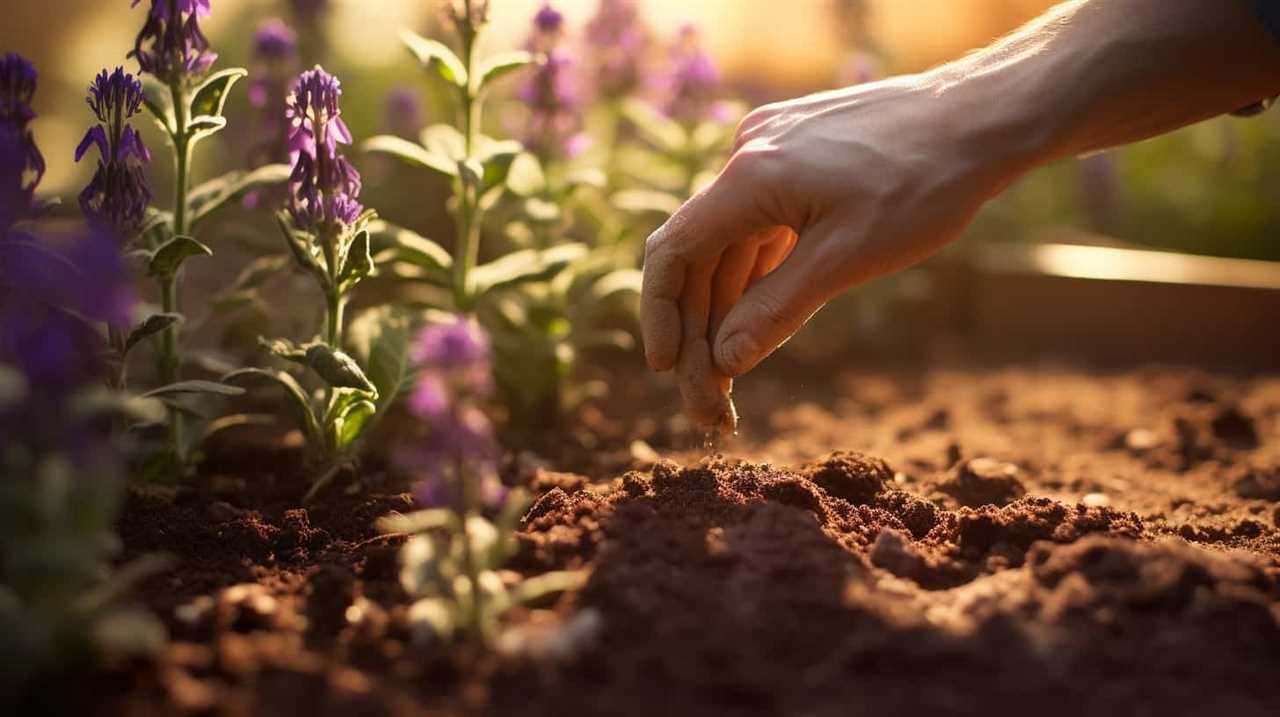
- Chia gel: We discovered that mixing chia seeds with water created a gel-like substance that could be used as a thickening agent in our cooking.
- Energy bars: We combined chia seeds with other ingredients to create nutritious and portable energy bars that sustained us during long journeys or strenuous activities.
- Digestive aid: Chia seeds were known for their ability to aid digestion and relieve digestive troubles, such as indigestion and constipation.
- Skin and hair care: We used chia seeds in various beauty treatments to promote healthy skin and hair, thanks to their high content of omega-3 fatty acids and antioxidants.
- Medicinal poultices: Ground chia seeds were used to create poultices for treating skin irritations, wounds, and inflammation.
Role of Chia Seeds in Promoting Health and Longevity in Ancient Societies
Incorporating chia seeds into our ancient diets not only enhanced our culinary experiences but also promoted health and longevity in ancient societies.
Alongside chia seeds, other seeds such as flax seeds and hemp seeds also played significant roles in ancient nutrition.
Flax seeds, for instance, were highly valued for their rich omega-3 fatty acid content and their ability to reduce inflammation and support heart health. Ancient societies recognized the impact of flax seeds on overall well-being and incorporated them into their diets to maintain optimal health.
Similarly, hemp seeds were revered for their high protein and mineral content, making them a valuable source of nutrition. These seeds were believed to boost energy, strengthen the immune system, and promote longevity in ancient societies.
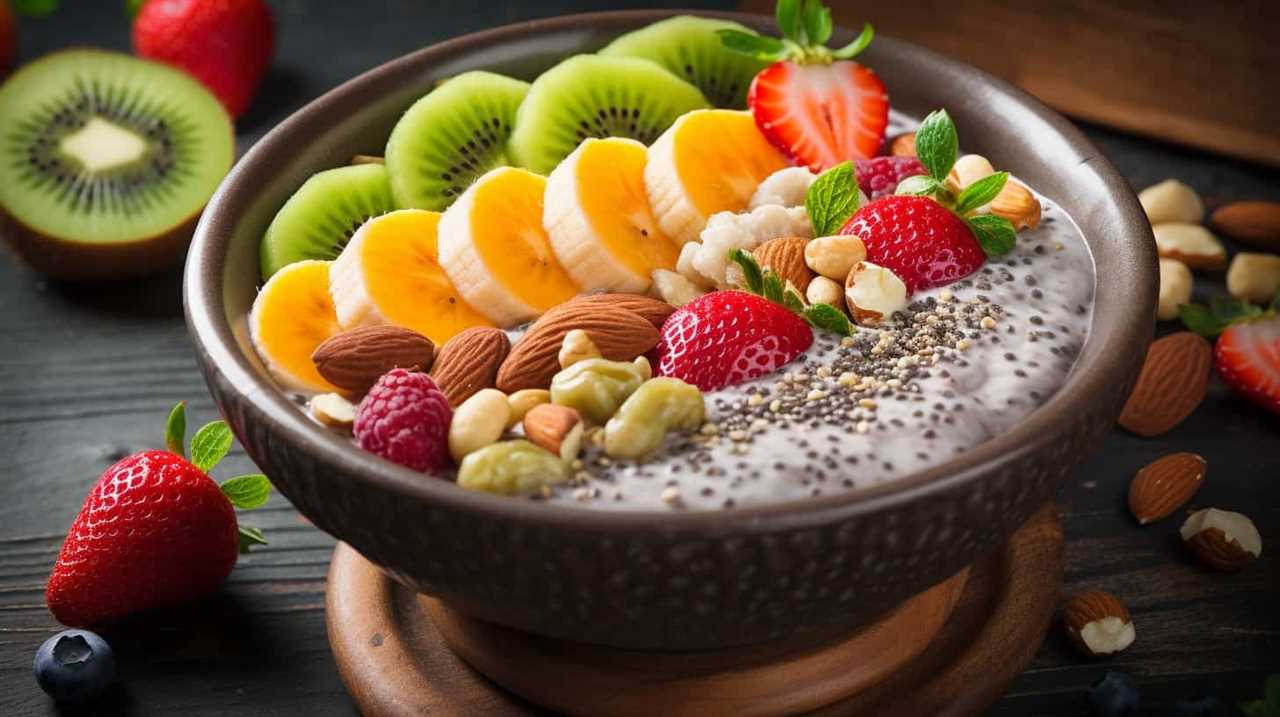
The inclusion of chia seeds, flax seeds, and hemp seeds in ancient diets showcases the importance of these seeds in promoting health and longevity in ancient societies.
Frequently Asked Questions
How Were Chia Seeds Cultivated and Harvested in Ancient Times?
Chia seed cultivation techniques in ancient times involved careful selection of fertile soil, proper irrigation, and hand harvesting. Ancient methods of seed storage included drying and storing in clay pots, ensuring a steady supply of nutritious seeds.
What Other Types of Seeds Were Commonly Used in Ancient Diets Besides Chia Seeds?
Ancient seed varieties were commonly used in diets for their nutritional benefits. They provided essential nutrients like protein, fiber, and omega-3 fatty acids. Including a variety of seeds in our diet can enhance overall health and well-being.
Did Ancient Societies Have Any Specific Rituals or Practices Related to the Consumption of Chia Seeds?
Ancient societies had specific rituals and practices related to the consumption of chia seeds. Chia seeds held cultural significance in these societies, and their consumption was often associated with ceremonies, fertility rites, and spiritual beliefs.

Were There Any Known Side Effects or Risks Associated With Consuming Chia Seeds in Ancient Times?
Oh, the risks and side effects of consuming chia seeds in ancient times! We analyzed the consumption across civilizations, and surprisingly, there were no known adverse effects. Quite the nutritious little seeds, weren’t they?
How Did the Availability and Use of Chia Seeds Vary Across Different Ancient Civilizations or Regions?
Variations in chia seed consumption across ancient civilizations were influenced by factors such as geographical location, agricultural practices, and cultural preferences. The availability of chia seeds had a significant impact on ancient diets, providing essential nutrients and contributing to overall nutrition.
Conclusion
In conclusion, it’s evident that chia seeds played a pivotal role in ancient nutrition. They weren’t only a staple food but also provided numerous nutritional benefits, serving as a source of essential nutrients for ancient cultures.
Additionally, chia seeds were utilized in various culinary and medicinal practices, enhancing both taste and health. Their incorporation in ancient diets contributed to promoting overall health and longevity, making chia seeds a valuable component of ancient societies’ nutrition.
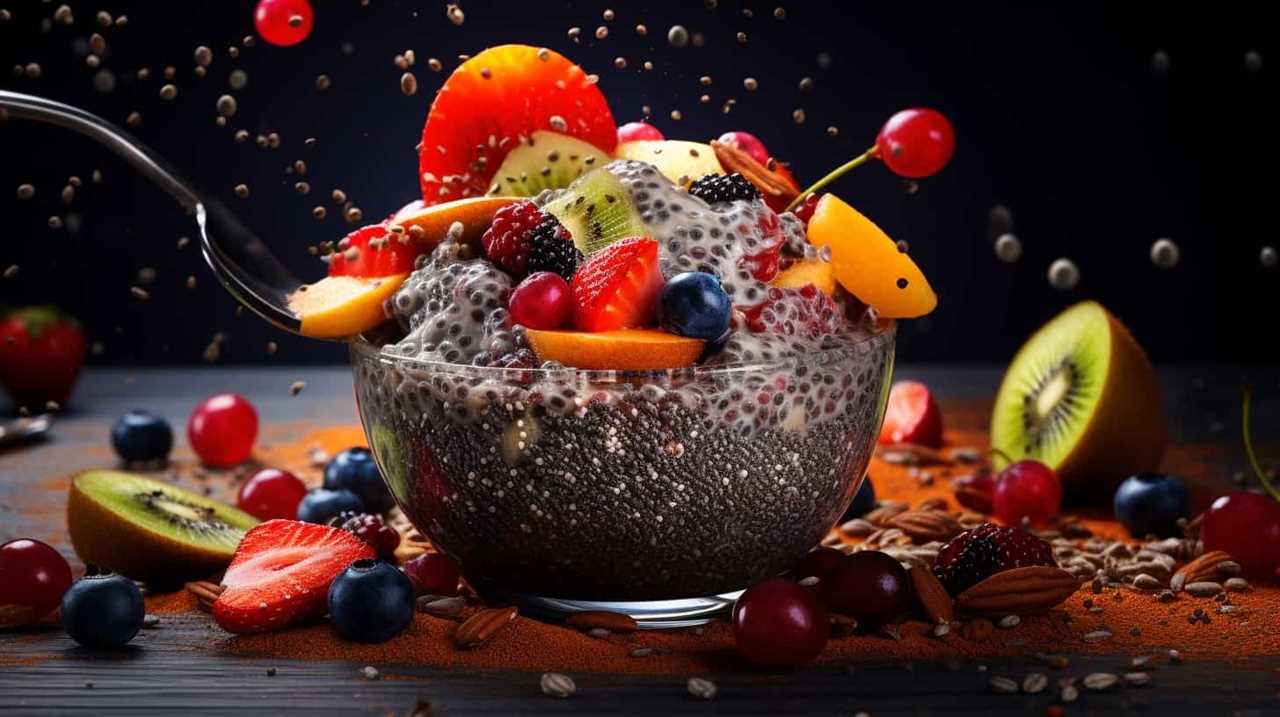
It’s remarkable how these little powerhouses could have such an impact on ancient lives.


